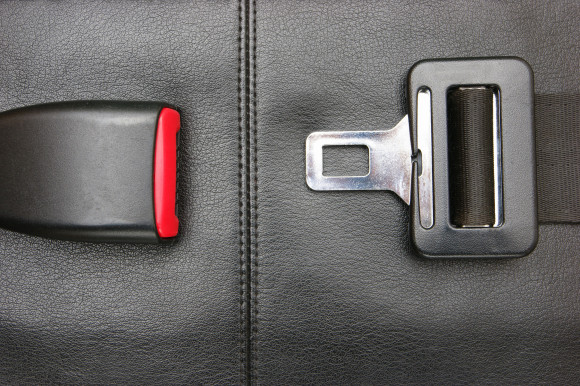A California Superior Court jury has found Toyota Motor Corp. liable for causing devastating injuries to a young woman in a crash that occurred in Monterey over four-and-a-half years ago in a verdict rendered last month.
After hearing evidence from both sides during a four-week trial, the jury awarded Chelsie Hill $12 million dollars in damages after only four hours of deliberations.
Hill was a teenager at the time of the crash, which was caused by a teen driver under the influence of alcohol. She was riding in the rear center seat of a 1996 Toyota 4Runner — the only seat in the vehicle equipped with a lap-only belt, which Hill was wearing.
Three of the four other occupants in the 30 mph, single-vehicle crash were wearing lap-shoulder belts, while the fourth passenger in the right rear seat was unrestrained. The four other occupants suffered relatively minor injuries. Hill’s spinal cord injury was caused by forces concentrated on her abdomen and lower spinal column when she jackknifed over the lap belt. The injuries rendered her paraplegic.
According to Dr. Robert Lieberson, the neurosurgeon who treated the young woman on the night of the crash, the belt virtually “decapitated” her at the midsection. She was “held together by her skin,” he told the jury.
During the trial Hill’s attorney, Bob Rosenthal, presented evidence that lap-only belts were needlessly hazardous because they could cause injuries, such as Hill’s paraplegia, that would be prevented by lap-shoulder belts.
Rosenthal also demonstrated that Toyota had known this at the time it designed the 1996 4Runner but chose instead to equip its rear center seat with a lap-only belt.
Toyota argued that Hill’s injuries were the result of her improperly wearing the lap-only belt, and due to the severity of the crash.
Physicians who treated the young woman the night of the crash testified that her injuries and scars were consistent with proper use of the belt. In arguing that Hill’s injuries were essentially her own fault, Toyota attorney Vincent Galvin told the jury that the young woman had been “indifferent to the use of the belt…she didn’t think of it in terms of safety” on the night of the crash.”
During the trial the jury was shown videos of impact tests comparing lap-only and lap-shoulder belts. Test dummies in the lap-only belt impacts jackknifed violently over the belts. Those in the lap-shoulder belts remained upright and experienced far less injurious force on their midsections and spinal columns.
New cars are now required by federal safety standards to be equipped with rear center seat lap-shoulder belts. The requirement took effect starting in 2005, more than three decades after research had first demonstrated the hazards of lap-only belts in crashes.
Millions of vehicles manufactured prior to 2005 with lap-only belts in the rear center seat remain registered and on the road.
Was this article valuable?
Here are more articles you may enjoy.



 Big ‘I’ Report: Independent Agency Channel Placed 62% of Premiums in 2023
Big ‘I’ Report: Independent Agency Channel Placed 62% of Premiums in 2023  ‘Great Resignation’ Enters Third Year as Workers Embrace AI, Upskilling, PwC Says
‘Great Resignation’ Enters Third Year as Workers Embrace AI, Upskilling, PwC Says  US P/C Insurers Post Best Q1 Underwriting Result In 17 Years
US P/C Insurers Post Best Q1 Underwriting Result In 17 Years  Changes at American Coastal Insurance After Florida OIR Action on ‘No-Fly List’
Changes at American Coastal Insurance After Florida OIR Action on ‘No-Fly List’ 


